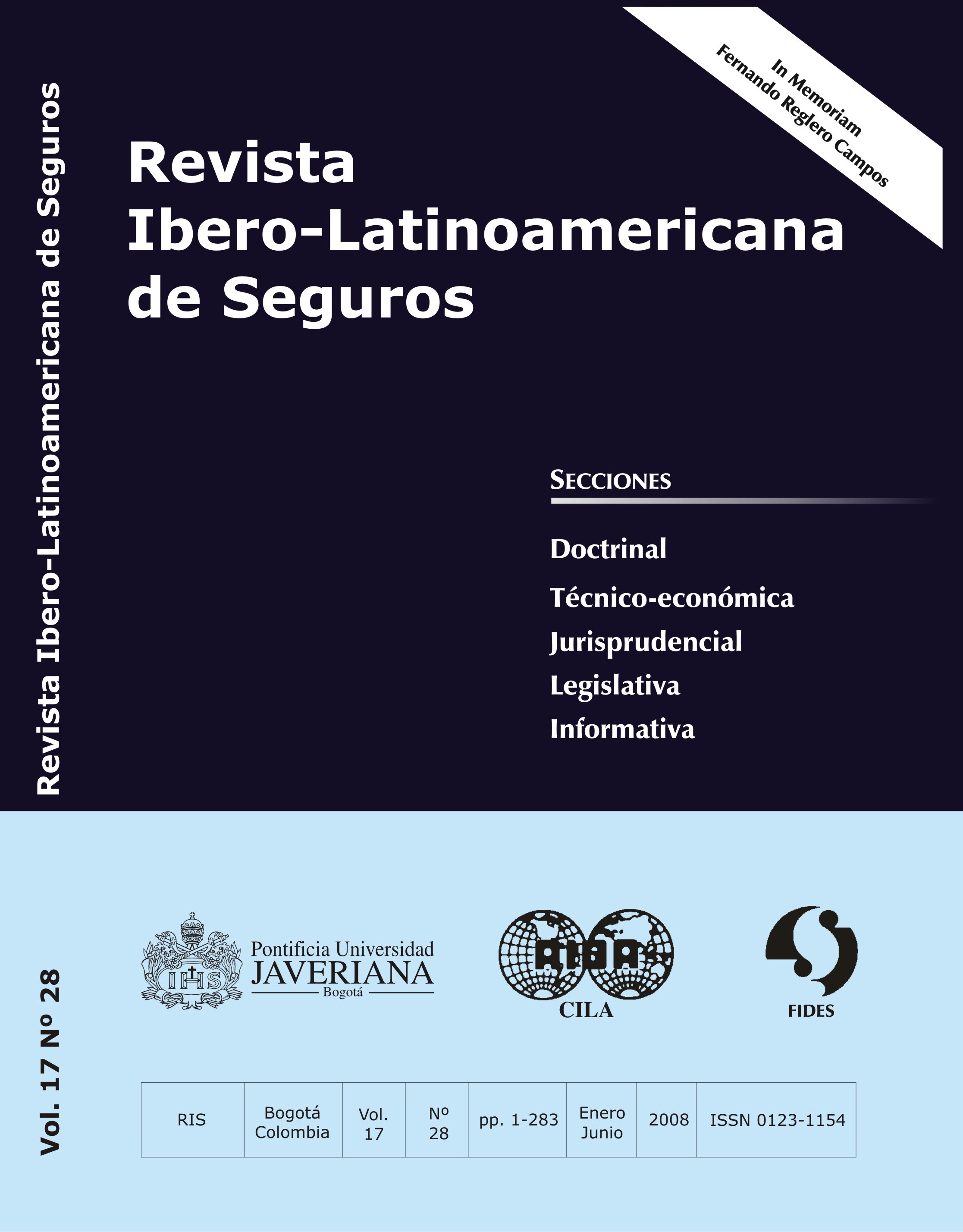Abstract
La gestión del riesgo de longevidad en el ramo de vida:
la cobertura aseguradora tradicional frente al
uso del mercado de capital population. Derived from this situation, there appears longevity risk, i. e., the risk that the members of a certain collective outlive their savings, which besides constitutes a non diversifiable risk, as all those members are equally exposed. Thus, the natural option of families for the coverage of their longevity risk lies in annuities. Annuities are financial, actuarial products allowing the insured to trans- form his or her cumulative savings accrued throughout a certain period of time into a flow (usually a lifetime flow) which performs as a complement of the income generated by a retirement pension coming from a public system. The problem, then, lies in the fact that in most countries the annuity market is underdeveloped, counts on a reduced number of participants and shows a high concentration, all as a consequence of tax disincentives, succession regulation, possible adverse selection, or a lack of expertise on the part of the investors. Nevertheless, other products exist that could be more suitable as much for the individuals as for the insurers exposed to this type of risk. Such products are the capital market derivatives on longevity, whose most prominent examples to date have been longevity bonds. These instruments pay a series of coupons depend- ing upon the value reached by a certain longevity/mortality index. Thus con- ceived, the coupons, as well as the principal, can be risky if the mortality within the hedged cohort behaves better than the expected. This article analyzes and presents a series of real examples of both forms of longevity risk coverage (the traditional and the alternative ones), making special reference to the advantages and disadvantages to be derived from the use of each.
This journal is registered under a Creative Commons Attribution 4.0 International Public License. Thus, this work may be reproduced, distributed, and publicly shared in digital format, as long as the names of the authors and Pontificia Universidad Javeriana are acknowledged. Others are allowed to quote, adapt, transform, auto-archive, republish, and create based on this material, for any purpose (even commercial ones), provided the authorship is duly acknowledged, a link to the original work is provided, and it is specified if changes have been made. Pontificia Universidad Javeriana does not hold the rights of published works and the authors are solely responsible for the contents of their works; they keep the moral, intellectual, privacy, and publicity rights.
Approving the intervention of the work (review, copy-editing, translation, layout) and the following outreach, are granted through an use license and not through an assignment of rights. This means the journal and Pontificia Universidad Javeriana cannot be held responsible for any ethical malpractice by the authors. As a consequence of the protection granted by the use license, the journal is not required to publish recantations or modify information already published, unless the errata stems from the editorial management process. Publishing contents in this journal does not generate royalties for contributors.


